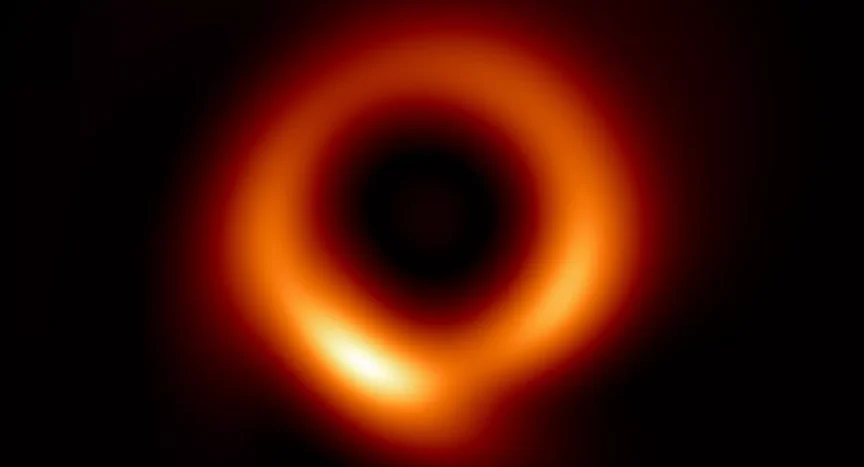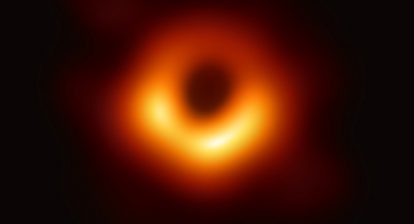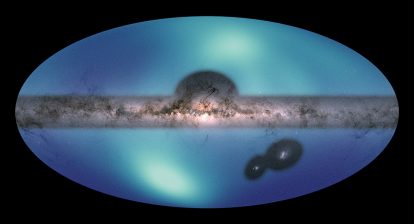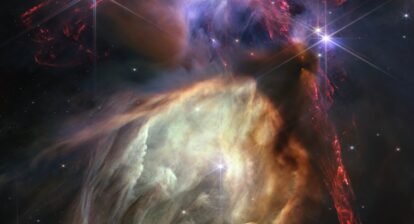The first direct image of a black hole (M87*, a solar system-size black hole in the center of the Virgo galaxy cluster and 6.5 billion times the mass of the sun) was captured in 2019, by researchers from the Event Horizon Telescope Collaboration (EHT), an array of eight globally synchronized radio telescopes.
Subsequently, the EHT team captured the first ever image of the black hole at the centre of our own Milky Way Galaxy. This one is called Sagittarius A* (or Sag A*), which is four million times the mass of our Sun and about 27,000 light-years away from us.
And now they have gone further. Using maching learning to clean and sharpen the image, they have achieved maximum resolution of the M87* black hole. The researchers used “PRIMO, a novel dictionary-learning-based algorithm that uses high-fidelity simulations of accreting black holes as a training set” to get the fullest resolution possible that also reveals a large, darker central region, surrounded by what they have termed a “skinny donut”. The researchers published the updated image April 13 in The Astrophysical Journal Letters.

(Left) EHT image of the black hole in the center of M87 based on 2017 data, as reported in Event Horizon Telescope Collaboration et al. (2019a). (Middle) Result of reconstructing the image by applying PRIMO to the same data set. (Right) The PRIMO image blurred to the resolution of the EHT array. The diameter of the ring of emission, the north–south brightness asymmetry, and the central brightness depression are present in all images. The PRIMO image offers a superior utilization of the resolution and dynamical range of the EHT array.
PRIMO is an acronym for principal-component interferometric modeling and it was used to analyze over 30,000 high-resolution images as the training set to discover common patterns, which were then used to “fill in regions of the Fourier domain where the EHT does not observe“.
“We present a new image reconstruction of the M87 supermassive black hole based on PRIMO, which uses dictionary learning to correct for the sparse Fourier-domain coverage of the EHT interferometric visibilities. This approach relies on using a large library of synthetic images from general relativistic magnetohydrodynamic simulations of accreting supermassive black holes as a training set. It optimizes the benefits of an agnostic image reconstruction technique by remaining flexible enough to reproduce a broad range of morphologies while using physically motivated training (as opposed to ad hoc regularizers) to infer the maximum information from the data,” says the paper.
“With our new machine learning technique, PRIMO, we were able to achieve the maximum resolution of the current [telescope] array,” lead author Lia Medeiros, an astronomer at the Institute for Advanced Study in Princeton, New Jersey, said in a statement. “Since we cannot study black holes up-close, the detail of an image plays a critical role in our ability to understand its behavior. The width of the ring in the image is now smaller by about a factor of two, which will be a powerful constraint for our theoretical models and tests of gravity.”
Although the gravity of a black hole is such that nothing – not even light – can escape it, we can see them because of the surrounding accretion disks (rings of material captured from gas clouds and stars orbiting the black holes’ event horizons). This material gets heated to such high temperatures due to friction that it glows, enough that we can see it.
According to the scientists, “The image of the M87 black hole that we have reconstructed with PRIMO is dominated by a narrow ring that has a substantial brightness depression at its center and a rim that is brighter toward the south.”


![The Great Dark Spot (top), Scooter (middle white cloud),[97] and the Small Dark Spot (bottom), with contrast exaggerated.](https://www.360onhistory.com/wp-content/uploads/2024/01/Neptune_storms-414x224.jpg)




